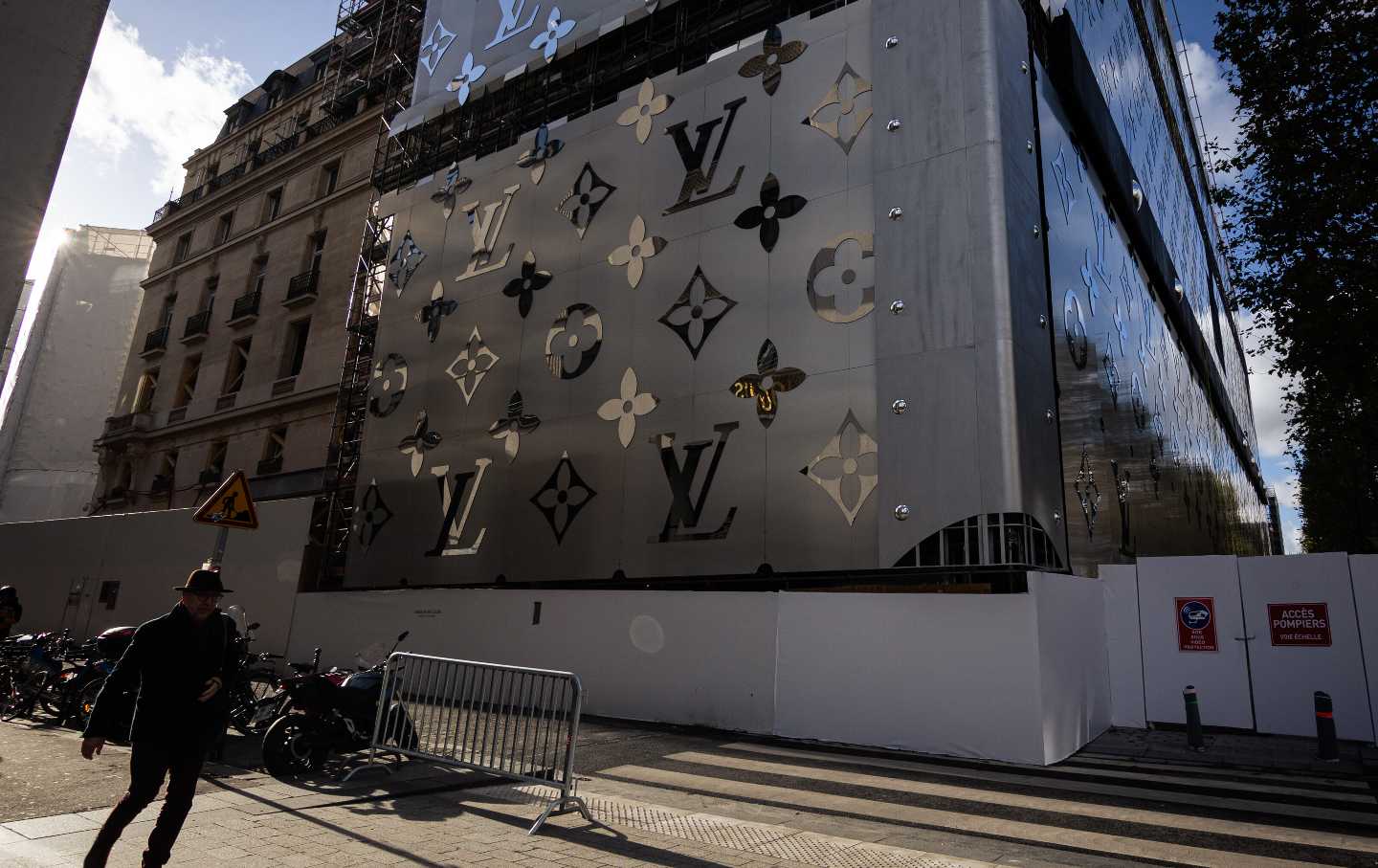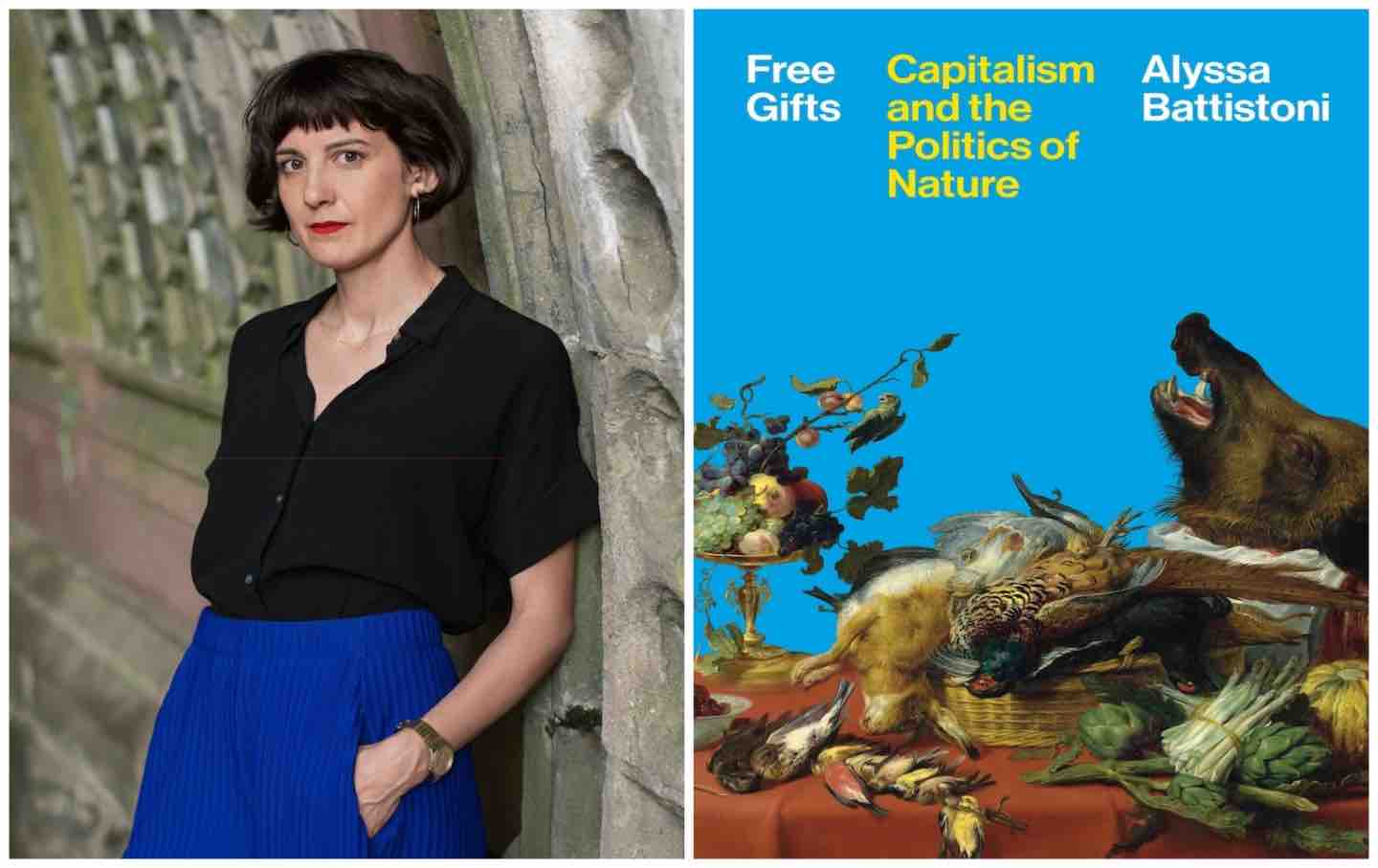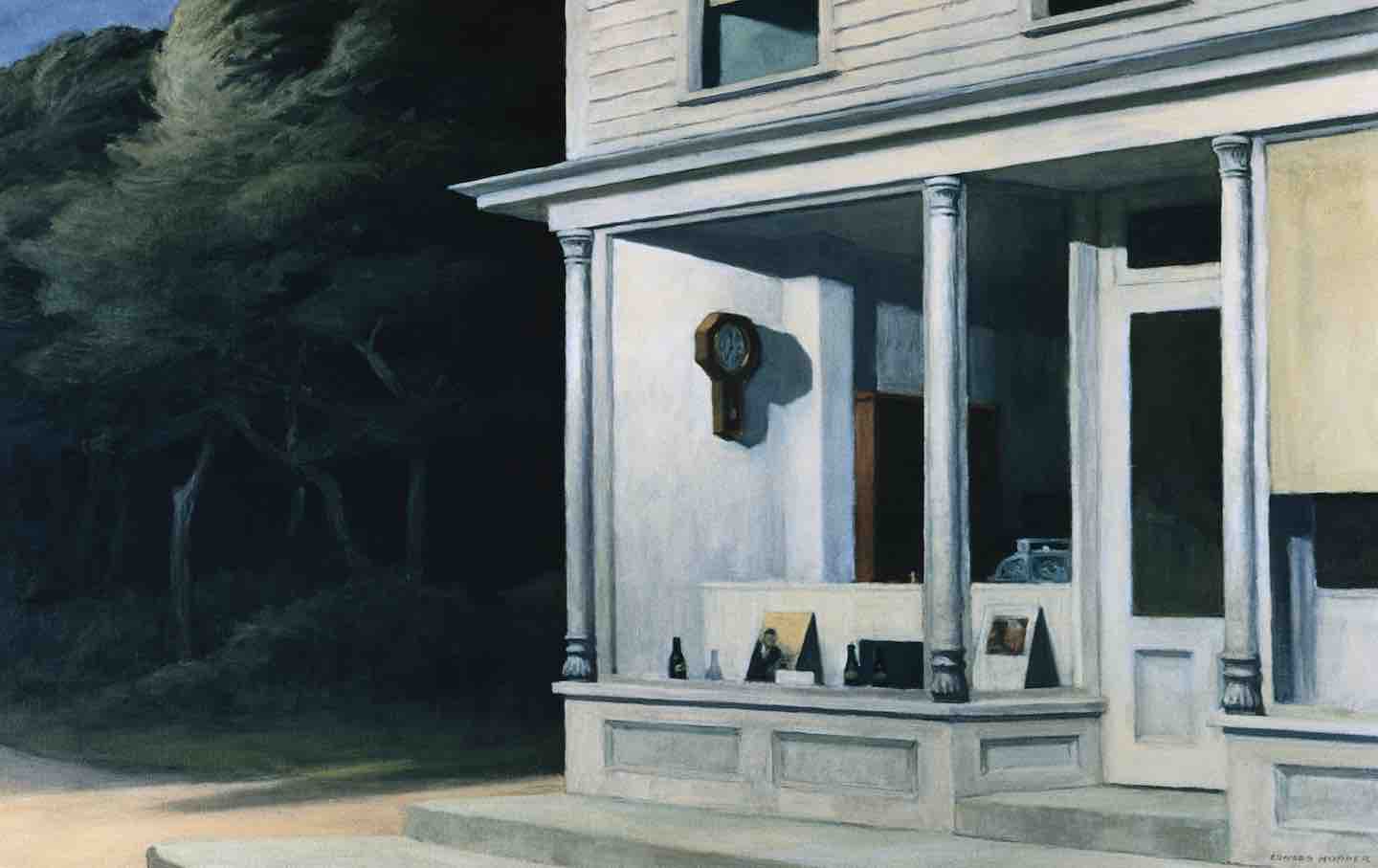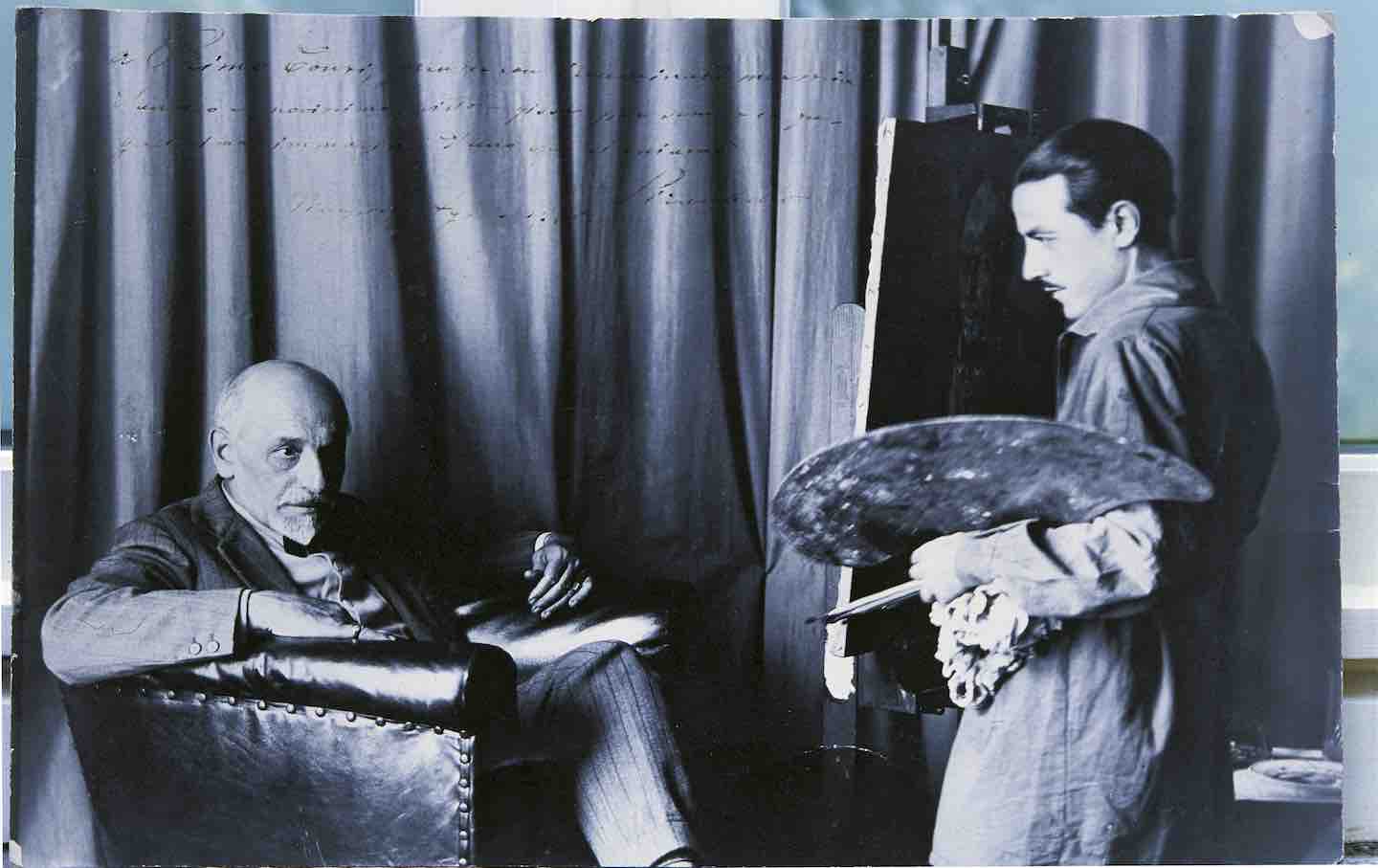Luxury Brands Are Buying Our Cities
Conglomerates like LVMH are gobbling up whole neighborhoods to advance their own interests.

In April, Wall Street Journal real estate reporters Deborah Acosta and Kate King detailed the extent to which LVMH—the multibillion-dollar luxury conglomerate behind such storied brands as Louis Vuitton, Givenchy, and Dior—has amassed real estate holdings in major cities. They revealed acquisitions to the tune of €3.5 billion since 2007. LVMH, funded mostly by its private-equity arm, has become a major developer, buying up coveted buildings on Fifth Avenue in New York and the Champs-Élysées in Paris—as well as vast swaths of land for its new luxury communities in Miami and Montreal, for which the firm sees itself as an urban planner. Michael Burke, head of LVMH’s Fashion Group division and a player heavily involved in these investments, told the WSJ, “All roads lead to real estate…. We’re creating a city.”
The architectural results, both those already built and those still in renderings, are what we’ve come to expect from the visual language of luxury brands: a mix of gimmicks and sleek minimalism in highly manicured streetscapes. In describing his development efforts, Burke cites the “Bilbao effect,” in which showy architecture supposedly hastens urban renewal, a phenomenon named after Frank Gehry’s sculptural Guggenheim Museum in Bilbao, Spain—a building widely (and falsely) credited with singlehandedly revitalizing the city’s dilapidated waterfront in the late 1990s. After Bilbao, cities from Hamburg to Los Angeles subscribed to the idea that extravagantly expensive, showstopper cultural buildings are key to reshaping an area to a more profitable end.
Gehry himself is well-known to LVMH. He designed the firm’s Fondation Louis Vuitton museum in Paris, a privately owned, highly Instagrammable composition of cascading glass sails with an interior best described as the world’s most disorienting airport. The museum was built, after considerable pushback and at the cost of an estimated $900 million, on the site of a beloved if timeworn public park. The the promise that the museum will be given to the city of Paris in 2062 is cold comfort, considering the fact that, according to Artnet, a report by the French Court of Auditors revealed that in the first 11 years of its existence, the Fondation had benefited from $589 million in tax cuts. The museum itself, which I visited last year, greets you with a giant, glittering Louis Vuitton logo straight out of a Paris Hilton music video and appears more suited to sell handbags than display art. It’s perhaps to be expected that its star-studded collection is both deeply unchallenging and deliberately photogenic, bound together less by tasteful curation and more by what will look best on social media. Even when it has an architectural pedigree, the dull end result of most luxury brandscaping is familiar to all of us: glassy facades with minimalist displays and interiors full of more moody lighting than goods.
Anyone who’s walked down the street of a luxury shopping district is familiar with how similar these stores are, despite their association with cutting-edge design. Paris’s looks almost identical to Vienna’s and Barcelona’s. (At least Barcelona has the embedded novelty of Gaudí.) The luxury-dominated street itself is a kind of brand, one that needs to be widely recognizable across different urban environments. That sameness extends down to the very typography of the brands: In the 2010s, Yves Saint Laurent, Burberry, and Balmain all switched from their once-iconic serifs to pared down sans-serifs indistinguishable from one another. This is the visual net result of conglomeration.
Aesthetics aside, the idea of an entire neighborhood planned around the inherent exclusivity of luxury brands is pretty grim. In the Miami LVMH development, the firm controls everything from the trees and, in LVMH’s words, the “neighborhood experience” (whatever that means) to which tenants can rent there and the selection of goofy, astroturfed public art. (The latter, of course, is so often a substitute for any organically derived artistic culture, which requires cheap rent, a degree of autonomy, and permission for mess-making and noise.) The sheer extent of LVMH’s holdings and the rhetoric it uses in describing them makes clear that its end game is to defend and obscure private property’s hold on shaping cities. Take this quote from Craig Robins, CEO of Dacra Development, a codeveloper in the Miami scheme: “The master plan for the Miami Design District was based on the idea that a vibrant neighborhood at the crossroads of commerce and culture could prioritize sustainability, the health of our ecosystem and the resilience of our city.” This is urbanism-washing par excellence. Like “smart cities” before them, campaigns like this claim that “creative” industries like fashion and tech are inherently better suited to spatial practice (and therefore, private enrichment) than to the public sector. Describing a brandscape that is defined by the status symbols of the wealthy in such terms is especially cynical.
Obviously, it’s a shame that rather than taxing them to build desperately needed affordable housing in places like New York or investing in climate resilience in places like Miami, cities instead let multibillion-dollar conglomerates gunning with private-equity money loose on their developing districts like private Robert Moseses. LVMH’s tactics also shed some light on how these firms think and operate with regard to space. In the neighborhood surrounding Paris’s Pont Neuf bridge, its strategy, according to the WSJ, was to “assemble a critical mass—enough land that they could control the entire area and therefore elevate the experience to something that would be a fitting environment for their luxury brands.” This should clarify to cities trying so desperately to attract high-end retail with tax incentives that such actors are operating according to their own interests. You cannot outsmart capitalist firms that have the power and the intent to buy control from you.
What we are effectively seeing is several trends in urbanism and architecture congealing into a kind of brand Frankenstein’s monster. Some of these, like the tactical use of artists to engineer gentrification or the Bilbao-inspired attempts to kickstart redevelopment with showpiece buildings, are old. Back in the ’90s, critics like Michael Sorkin and architects like Rem Koolhaas disparaged the “Disneyfication” of the contemporary city. However, rather than the silly pastel colors and too-cute postmodern architecture, the contemporary city has manifested corporatization in a more brutal way—one increasingly defined by its intolerance for transgression, difference, or imperfection, and its aggressive tactic of flattening it into one frictionless, highly controlled landscape. This is a process the urbanism critic René Boer calls “smoothification,” which usefully describes the effect and the aesthetic end result of sociopolitical processes that include gentrification and over-policing.
We have also been living for almost 15 years with branded spaces oriented around the Internet-based logistics system that spelled the death of many retail brands, plus the attention economy of social media.. In the early, “millennial” days of social media, brands were more reliant on old-school theme-ification (Instagrammable displays and immersive experiences at brick-and-mortar locations). Then, following the lead of streetwear and sneaker culture of the 2010s, brands began to manufacture pseudo-events and drum up hype to get people waiting in line for new releases. Both tactics use place-based exclusivity to mitigate the threat of online shopping, which theoretically makes their products accessible to everyone. It was inevitable that such tactics would be scaled up from the store to the street to the neighborhood level.
At the end of the day, LVMH’s ploys make sense as a way of stabilizing its presence in a rapidly changing urban landscape. The only way to avoid the vacillation of rent and neighborhood change is to own. That’s why buying huge swaths of the city is something cities should be doing to stabilize rents, create more sustainable ways of living, and ensure their longevity as places for people from all walks of life—not just the Louis Vuitton–toting ones.
Disobey authoritarians, support The Nation
Over the past year you’ve read Nation writers like Elie Mystal, Kaveh Akbar, John Nichols, Joan Walsh, Bryce Covert, Dave Zirin, Jeet Heer, Michael T. Klare, Katha Pollitt, Amy Littlefield, Gregg Gonsalves, and Sasha Abramsky take on the Trump family’s corruption, set the record straight about Robert F. Kennedy Jr.’s catastrophic Make America Healthy Again movement, survey the fallout and human cost of the DOGE wrecking ball, anticipate the Supreme Court’s dangerous antidemocratic rulings, and amplify successful tactics of resistance on the streets and in Congress.
We publish these stories because when members of our communities are being abducted, household debt is climbing, and AI data centers are causing water and electricity shortages, we have a duty as journalists to do all we can to inform the public.
In 2026, our aim is to do more than ever before—but we need your support to make that happen.
Through December 31, a generous donor will match all donations up to $75,000. That means that your contribution will be doubled, dollar for dollar. If we hit the full match, we’ll be starting 2026 with $150,000 to invest in the stories that impact real people’s lives—the kinds of stories that billionaire-owned, corporate-backed outlets aren’t covering.
With your support, our team will publish major stories that the president and his allies won’t want you to read. We’ll cover the emerging military-tech industrial complex and matters of war, peace, and surveillance, as well as the affordability crisis, hunger, housing, healthcare, the environment, attacks on reproductive rights, and much more. At the same time, we’ll imagine alternatives to Trumpian rule and uplift efforts to create a better world, here and now.
While your gift has twice the impact, I’m asking you to support The Nation with a donation today. You’ll empower the journalists, editors, and fact-checkers best equipped to hold this authoritarian administration to account.
I hope you won’t miss this moment—donate to The Nation today.
Onward,
Katrina vanden Heuvel
Editor and publisher, The Nation








